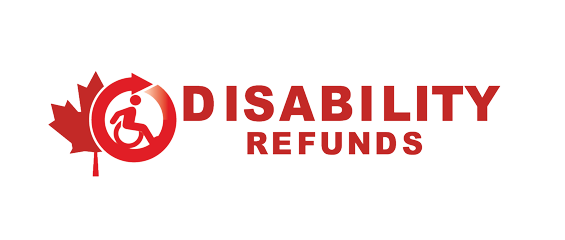Sleep Apnea - Disability Tax Credit

If you or anyone you are taking care is labeled with Sleep Apnea, chances are that you may qualify for Disability Tax Credit.
Sleep apnea and disability tax credit in Canada
This is a serious sleep disorder that occurs when a person’s breathing is interrupted during sleep. People with untreated sleep apnea stop breathing repeatedly during their sleep, sometimes hundreds of times. As a result the brain and the body may not get enough oxygen. The Canada Revenue Agency offers substantial credit as Disability Tax Credit for people with Sleep Apnea.
Disability tax credit for sleep apnea: find out if you qualify
We offer a free consultation to find out if you qualify and are eligible for Canada Disability Tax Credit and have years of experience working with such cases. We serve the provinces of Ontario, Alberta, British Columbia, Manitoba, New Brunswick, Newfoundland, Nova Scotia, Prince Edward Island, Quebec and Saskatchewan.
Get expert help with your sleep apnea disability tax credit claim
As a Disability Tax Credit Consultant, expert and specialist, we will act on your behalf and do the necessary paperwork and deal with Canada Revenue Agency (CRA) and get the maximum amount allowed. The submission process is never straightforward and requires careful planning. Fortunately, by years of submitting cases involving Sleep Apnea and Disability Tax Credit, we are confident in making your claim successful. We`ll constantly be in touch with the CRA to and keep you informed of the status of your application. To get started, give us a call, or simply use the form on your right and we`ll be in touch.
Disability Tax Credit for Sleep Apnea: What You Need to Know
Sleep apnea is a serious condition that can impact daily life, making it difficult to get quality rest and maintain overall health. The disability tax credit for sleep apnea provides financial relief for those who meet the eligibility criteria set by the Canada Revenue Agency (CRA). This credit is designed to help offset some of the financial burdens of managing the condition.
Many individuals with sleep apnea qualify for this tax credit, but applying can be complex. The CRA assesses each case based on how the condition affects daily life, including its impact on breathing, energy levels, and overall well-being. If sleep apnea affects your daily living activities such as problem solving, using your judgement, taking care of yourself, remembering things, going out in community, socializing or in severe cases walking, etc, there may be a strong case for approval.
Understanding eligibility requirements and gathering the correct documentation is very important. Medical evidence from a healthcare professional detailing how the condition affects quality of life is required. With the right support, many individuals successfully claim this tax credit and receive financial benefits to help with ongoing care costs.
Sleep Apnea and Disability Tax Credit: Understanding the Benefits
The sleep apnea and disability tax credit can provide notable financial relief for individuals managing the condition. This tax credit can reduce the overall tax burden, helping to cover the costs associated with treatment, medical devices, and lifestyle adjustments. For those using CPAP machines or other therapies, these savings can make a difference in long-term healthcare management.
Many individuals are unaware they qualify for this tax credit, often assuming it applies only to more severe disabilities. However, sleep apnea can have serious health consequences, including fatigue, cardiovascular issues, and difficulty concentrating. If the condition affects everyday life and requires ongoing treatment, qualifying for the tax credit is possible.
A common concern is the complexity of the application process. The CRA requires detailed medical documentation, and errors or missing information can delay or even lead to the rejection of a claim. Seeking professional guidance can simplify the process, ensuring the application is correctly prepared and increasing the likelihood of a successful outcome.
Steps to Apply for the Disability Tax Credit for Sleep Apnea
Applying for the disability tax credit for sleep apnea requires careful attention to detail. The first step is documenting the symptoms of sleep apnea i.e., how daily living activities are affected, if possible obtaining a medical diagnosis confirming the severity of the condition. Then, getting your healthcare professional to complete the necessary CRA forms explaining how sleep apnea affects daily activities and overall health.
Once the medical documentation is completed, the application must be submitted to the CRA for review. Processing times can vary, and additional information may be requested before deciding. Many individuals find the process challenging due to the detailed requirements, but assistance from experienced professionals can help navigate the complexities.
The financial benefits for those who qualify can be significant. The tax credit can help offset treatment costs and improve access to necessary medical equipment. Applicants can appeal or reapply with additional supporting evidence if an application is denied. Understanding the full process and having the right guidance can make claiming this tax credit more straightforward and successful.
By taking the right steps and seeking expert support, eligible individuals can receive the benefits they are entitled to under Canada’s tax system.
